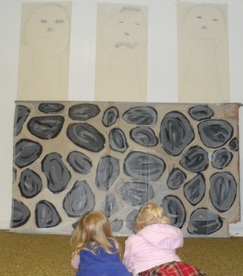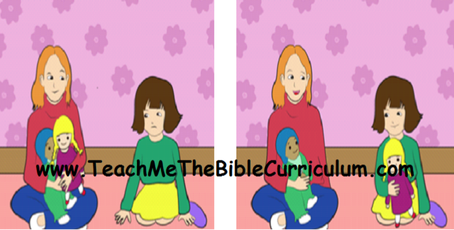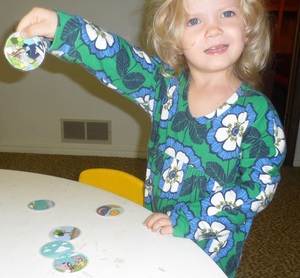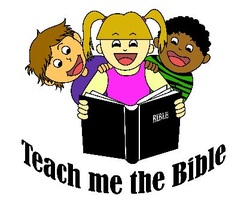For the month of April I am going to try something new. I thought it would be fun to add a Q&A to the Facebook page. I will start with questions for ages 6 months to 4 years. Send me a message through FB or the website with your question.
I am going to start off with this question: How do you teach a toddler who is nonverbal?
This is a great question. I think this is what scares some teachers away from teaching this age group. It can be awkward to ask questions and not receive any verbal interaction back. You wonder if the child is understanding the lesson. From my experience most children’s receptive language (what they understand) is much greater than their expressive language (what they can say). The nonverbal child is likely understanding the lesson they just don’t have a way verbally to let you know.
I am going to start off with this question: How do you teach a toddler who is nonverbal?
This is a great question. I think this is what scares some teachers away from teaching this age group. It can be awkward to ask questions and not receive any verbal interaction back. You wonder if the child is understanding the lesson. From my experience most children’s receptive language (what they understand) is much greater than their expressive language (what they can say). The nonverbal child is likely understanding the lesson they just don’t have a way verbally to let you know.
Ways to encourage the non-verbal toddler to communicate without words in class:
Role-playing: They can show you they understand. For example, if you ask the children what the 12 spies did you will know they understand when they sneak up to spy on the land.
Movement: Using movement in class helps the child to communicate without words. For example, when reciting a memory verse you can use gestures while saying it. The girl in the video is VERY talkative, but it gives you an idea of adding gestures to your memory verses.
Non-verbal responses: A wonderful way to review the lesson is by allowing for non-verbal responses when you ask a question. You can print smiley face/frowny face signs for the children to hold up. They can do thumbs up or thumbs down. You can have them shake their head yes or no.
Offer Choices: Teaching applications is made easy when using pictures. Offer them choices and allow them to point to the correct one. For example, you might ask which picture shows the child who is sharing.
Offer Choices: Teaching applications is made easy when using pictures. Offer them choices and allow them to point to the correct one. For example, you might ask which picture shows the child who is sharing.
Review with pictures: Use pictures that the children can place in order. The children really enjoy using the memory ribbons in class.
Tips to increase verbal responses:
Make eye contact with the child when you are talking.
Use gestures when you are talking.
Pause to allow for attempts.
Use all of their senses.
Use hand over hand when showing them a gesture you would like for them to do.
Ask short questions that encourage one word answers.
Give the first sound of the word you are looking for.
Include simple sign language in your lessons.
Talk, talk, and talk some more. Tell them everything you are doing.
Use gestures when you are talking.
Pause to allow for attempts.
Use all of their senses.
Use hand over hand when showing them a gesture you would like for them to do.
Ask short questions that encourage one word answers.
Give the first sound of the word you are looking for.
Include simple sign language in your lessons.
Talk, talk, and talk some more. Tell them everything you are doing.





